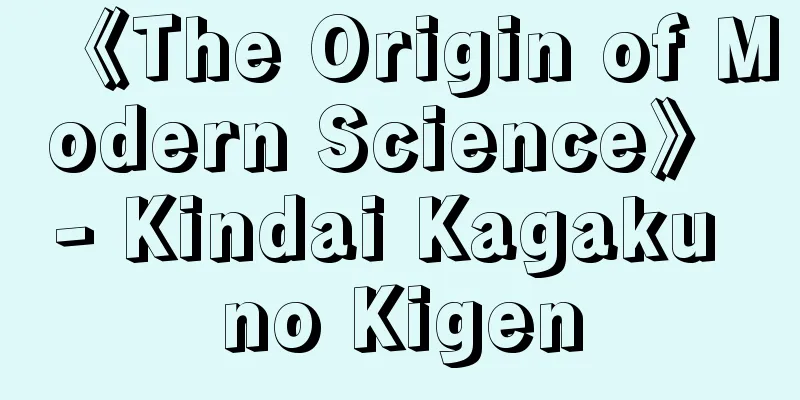《The Origin of Modern Science》 - Kindai Kagaku no Kigen

|
In the narrow sense, it refers to the content used by H. Butterfield, a professor of history at Cambridge University in England, in his book The Origins of Modern Science (1949). Conventionally, events such as the Renaissance and the Reformation have been used to separate the Middle Ages from modern times in world history. *Some of the terminology referenced in "The Origin of Modern Science" is listed below. Source | Heibonsha World Encyclopedia 2nd Edition | Information |
|
…狭義には,イギリスのケンブリッジ大学の歴史学教授であったH.バターフィールドが《近代科学の起源》(1949)で用いた内容をさす。従来,世界史の上で中世と近代を画する区切りとしてルネサンスや宗教改革という事象が用いられていた。… ※「《近代科学の起源》」について言及している用語解説の一部を掲載しています。 出典|株式会社平凡社世界大百科事典 第2版について | 情報 |
<<: Kintai Gakufu - Kintai Gakufu
Recommend
Partial payment - ichibufutan
...Patient burden can take three forms. The first...
Yoshii-Higashi Kashiwazaki Gas Field - Yoshii-Higashi Kashiwazaki Gas Field
Discovered in 1968 by Japan Petroleum Exploration ...
Drop - Touka
〘noun〙① To throw an object from above downwards. T...
Yang-tou-wa Ruins
A Neolithic shell mound at the tip of the Liaodong...
Antipyrine - Antipyrine
Antipyretic and analgesic. Created in Germany in ...
Sputnik - Спутник/Sputnik
The name of the world's first artificial sate...
Hospitality for foreigners - Ijinkantai
The custom of welcoming wandering religious figure...
Curtissy - Curtissy
...There are many variations, and the leaves of P...
Harem - Harem (English spelling)
In the Islamic world, the area where women live i...
Funk, IK (English spelling) FunkIK
…Webster's status was not shaken by the appea...
Lulu (English spelling)
An unfinished German opera in three acts composed ...
Shachiburi - tadpole fish
A marine fish belonging to the family Orcinidae, ...
Eupolis (English spelling)
[Born] 446 [Died] c. 410 BC Greek comedian. One of...
Pie - Pai (English spelling) pie
In France, it is called pâté. It is made by makin...
Barge - Nibu
〘 noun 〙 A general term for cargo ships that trans...





![Kanose [town] - Kanose](/upload/images/67cb3bdc972f3.webp)



